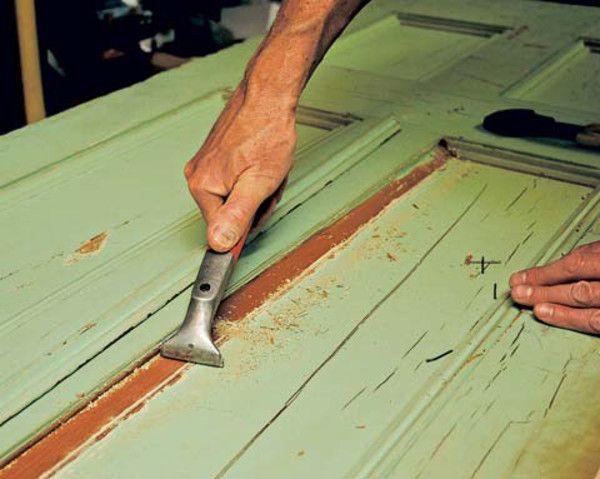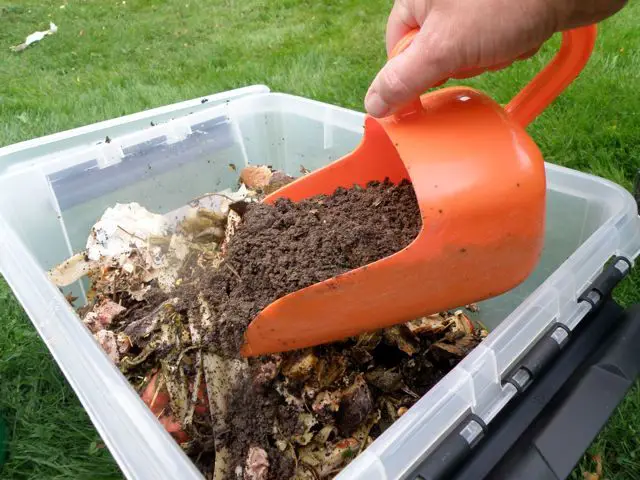Can You Use A Metal Scraper On Wood?
Woodworkers have debated the merits of using metal scrapers on wood projects for decades. While scrapers can provide some advantages over sandpaper in terms of cost and efficiency, there are also valid concerns about potential damage to the wood. This article will provide a comprehensive overview of using metal scrapers on wood, including an unbiased examination of the pros and cons, recommendations for technique and proper use, safety considerations, and alternatives.
With the wide availability of power sanders and concerns about marring wood grain, scrapers have fallen out of favor with some woodworkers. However, many experienced craftspeople still employ hand scrapers for tasks like final smoothing or cleaning up glue. This article will cut through the debate and equip readers with the knowledge to make an informed decision about incorporating metal scraping tools into their woodworking process.
Pros of Using Metal Scrapers on Wood
Metal scrapers can be very effective at removing stubborn material from wood surfaces that other tools struggle with. As Paul Sellers explains, “Scrapers are especially good at dealing with grain reversal, interlocking grain and areas of changing grain direction.” (https://paulsellers.com/2022/04/more-than-a-scrape/)
The thin, sharp edge of a properly sharpened metal scraper slices through tough grain much cleaner than sandpaper or planes. Scrapers cut through the wood fibers instead of tearing them out like sandpaper. This helps create a very smooth, polished surface.
According to The Art of Lutherie, “Scrapers allow for very fine shaving and are great for working figured or wild grained woods where tear-out is a problem.” (https://theartoflutherie.com/card-scrapers/) The thin scraping edge can follow the changing grain direction more easily.
In summary, metal scrapers are an excellent choice for removing stubborn grain, achieving a glass-like polished surface, and working with difficult figured or changing grain patterns where other tools may struggle.
Cons of Using Metal Scrapers on Wood
While metal scrapers can be useful tools for certain woodworking projects, they do come with some downsides to consider:
Metal blades can potentially damage the wood surface if used improperly or aggressively. Applying too much pressure while scraping can dig into the wood more than intended, leaving scratches or gouges. According to a Reddit discussion on wood scrapers, users warn that metal scrapers require a delicate touch to avoid marring the wood.
Scrapers with very sharp unhoned edges can catch and tear out wood fibers rather than slice cleanly. As Paul Sellers advises, the edge needs proper honing and burnishing to work well on wood.
Compared to sandpaper, scrapers may not remove material as evenly, resulting in an uneven surface. Careful technique is required according to the direction of wood grain.
It can take practice to master the nuances of using a card scraper versus other methods like sanding. Scraping has more of a learning curve for beginners to develop the right skills.
Types of Projects Well-Suited for Metal Scrapers
Metal scrapers can be a useful tool for certain woodworking projects, especially those involving refinishing furniture or removing paint or finish from wood surfaces. Here are some examples of projects where a metal scraper may excel:
Refinishing furniture – Scrapers can remove old finish or residue without gouging into the wood like sandpaper might. They allow for more control and precision when preparing furniture for new stain or paint. Scrapers are commonly used when refinishing tabletops, chairs, cabinets, and other furniture pieces.[https://www.accuride.com/en-us/blog/woodworking-blogs/woodshop-corner-scrape-your-cabinets-surface-like-a-pro]
Removing paint – Paint is difficult to sand off wood without ruining the underlying surface. Scrapers can shave off paint layers smoothly and cleanly. For stripping paint from wood doors, windowsills, trim, and other areas, a metal scraper may work better than chemical strippers or sanding.[https://theartoflutherie.com/card-scrapers/]
Detail and finesse work – The thin, sharp edge of a scraper allows for meticulous removal of material in detailed or hard-to-reach areas. Scrapers excel at ultra-fine smoothing or shaping that would be difficult with other tools.
Preparing glue joints – Scrapers can remove excess dried glue after joinery and clamping. The thin profile can get into tight corners.
Surface defect removal – Small scratches, burns, or other blemishes can be carefully scraped out of a wood surface without damaging surrounding areas.
In general, any project requiring discretionary removal of thin layers of material may benefit from the precision of a metal scraper.
Technique for Proper Use
Using a metal scraper on wood requires a delicate touch and proper technique for the best results. The key is to use light pressure and always scrape with the grain of the wood. As Bob Vila advises, gently push the scraper along the surface, applying just enough rearward pressure so the bottom edge removes a thin shaving of wood. Scraping against the grain can tear up the wood surface. It’s crucial to let the sharpened edge of the scraper do the work—heavy pressure is unnecessary and risks marring the wood.
Aim to take off thin, translucent shavings around 1/1000” thick with each pass of the scraper. Make continuous, overlapping strokes following the direction of the wood grain. Apply a lubricant like mineral oil if the wood becomes sticky. Be patient and focus on controlling the angle. With practice, you can achieve a beautifully smooth finish. Always inspect for areas that still need attention and scrape them with additional light passes until satisfyingly even and consistent.
Alternative Options
While metal scrapers can be effective for some wood scraping tasks, there are other options that may be gentler on the wood. Here are some common alternatives to metal scrapers:
Sandpaper is a popular abrasive option for smoothing and removing material from wood’s surface. It comes in varying grits, with higher grits creating a finer scratch pattern. Sanding can remove material efficiently without gouging the wood like an aggressive metal scraper. However, sanding creates dust and isn’t as precise as a scraper for small areas. According to Canadian Woodworking, sandpaper is a “great option for quickly smoothing large surfaces.”
Steel wool is made of extremely fine steel filaments that can smooth and polish wood. Finer grits, like 000 grade steel wool, are less abrasive and less likely to scratch wood than coarse variants. Steel wool doesn’t remove material as quickly as sandpaper but can create a very smooth surface when used properly, as noted by Instructables’ guide on using steel wool.
Chemical strippers use solvents to soften finishes and remove layers from wood’s surface. They are gentler than scraping and don’t create scratches or gouges. However, strippers can raise wood grain and some contain toxic ingredients requiring proper handling and disposal. According to This Old House, chemical strippers like “offer a hands-off way to remove years of accumulated paint and grime.”
Scraping vs. Sanding
Scraping and sanding wood are two common techniques used in woodworking, each with their own pros and cons. According to The Wood Whisperer (https://thewoodwhisperer.com/articles/sanding-vs-scraping/), scraping can leave a cleaner, more brilliant surface because it shears the wood fibers. Sanding abrades the surface, leaving small scratches everywhere that require progressively finer grits to remove (https://woodworking.stackexchange.com/questions/1134/what-are-the-differences-between-sanding-and-scraping).
A key advantage of scraping is that it can remove material quickly while leaving a very smooth surface. It also avoids packing sawdust into the pores of open grained woods like oak or walnut. Scraping can be done by hand or with a power scraper for larger surfaces. However, scraping can compress softer woods like pine or cedar below the surface, leaving bruises or crushing the fibers.
Sanding progressively abrades the surface to remove tool marks and prepare the wood for finishing. It can be done by hand or with power sanders. Sanding sponges and sanding blocks allow sanding contours and profiles by hand. The main downside is that sanding creates scratches and dust. It takes more time to sand through multiple grits to completely smooth the wood. Sanding also removes more material than scraping.
In general, scraping works well on hardwoods for flatter surfaces, while sanding can tackle all wood types on more complex profiles. Many woodworkers use a combination, scraping for the initial smoothing followed by light sanding to remove any remnants of tool marks and prepare for finishing.
Recommended Metal Scraper Features
When selecting a metal scraper for woodworking projects, there are certain features to look for that will optimize performance and ease of use:
Carbide Cutting Edge – Carbide steel is extremely hard and maintains a sharp edge. Carbide scrapers will stay sharper longer than traditional high carbon steel. They are excellent for removing paints, finishes, glues, and varnishes from wood surfaces (1).

Ergonomic Handle – A comfortable, ergonomic handle allows you to apply consistent pressure and reduces hand fatigue during long scraping sessions. Soft grip handles that fit your hand size and shape are ideal (2).
Adjustable Blade – Some scrapers feature a blade that can be adjusted in and out of the body for customization of the cutting depth. This allows you to be more precise with how much material is removed (3).
Easy to Sharpen – While carbide blades stay sharp longer, they will eventually need sharpening. Seek out a scraper where the blade is easy to remove and sharpen when needed.
Proper Weight and Size – Scrapers should feel balanced in your hand. Blade size, handle length, and overall weight should match the needs of your project and hands.
When shopping for a metal scraper optimized for woodworking, prioritize carbide blades and ergonomic handles. Adjustability, sharpening ease, weight, and size are also key considerations for long-term performance.
(1) https://www.ptreeusa.com/hand_tools_scrapers.html
(2) https://www.amazon.com/wood-scraper/s?k=wood+scraper
(3) https://theartoflutherie.com/card-scrapers/
Safety Tips
When using a metal scraper on wood, it’s important to take proper safety precautions. Metal scrapers have sharp edges that can cause injuries if used improperly. Here are some key tips:
Use eye protection. Safety glasses or goggles will protect your eyes from flying wood chips and debris (Source). Eye injuries are common with scraping, so don’t skip eye protection.
Wear gloves. Gloves will protect your hands and fingers from abrasions and splinters. Leather work gloves work well for extra grip and dexterity.
Take light strokes. Don’t use excessive force or pressure when scraping. Light, repeated strokes are safer and help maintain control. Scraping too aggressively can damage the wood surface.
Watch your angles and directions. Always scrape in the direction of the wood grain, not against it. Hold the scraper at a low angle (10-30 degrees) to the wood surface for optimal control.
Check for knots and defects first. Inspect the wood and avoid using a scraper on defective areas, which are more prone to splintering and cracking.
Keep the scraper sharp. A dull blade requires more force and is prone to slipping. Maintain the scraper’s edge for clean and safe cuts.
Conclusion
Using metal scrapers on wood comes with both advantages and disadvantages. The main benefit is that metal scrapers can quickly and efficiently remove material from wood surfaces. They excel at tasks like stripping paint or varnish, leveling surfaces, and debarking logs. However, metal blades can damage wood fibers if used carelessly, leaving behind scratches or gouges.
For best results, opt for a cabinet scraper, card scraper, or specialty wood scraper over a generic paint scraper. Use the proper scraping technique, working with the grain and applying even pressure. Consider potential alternatives like sandpaper, sanding blocks, planes, or chemical strippers when feasible. And always keep safety top of mind – wear gloves, eye protection, and dust masks when scraping.
In summary, metal scrapers can effectively be used on wood with the right approach. But extra care is needed compared to sanding methods. Assess each project individually and utilize metal scrapers only in suitable applications. With practice and caution, these specialized tools can aid woodworking jobs requiring the removal of materials from wood surfaces.





